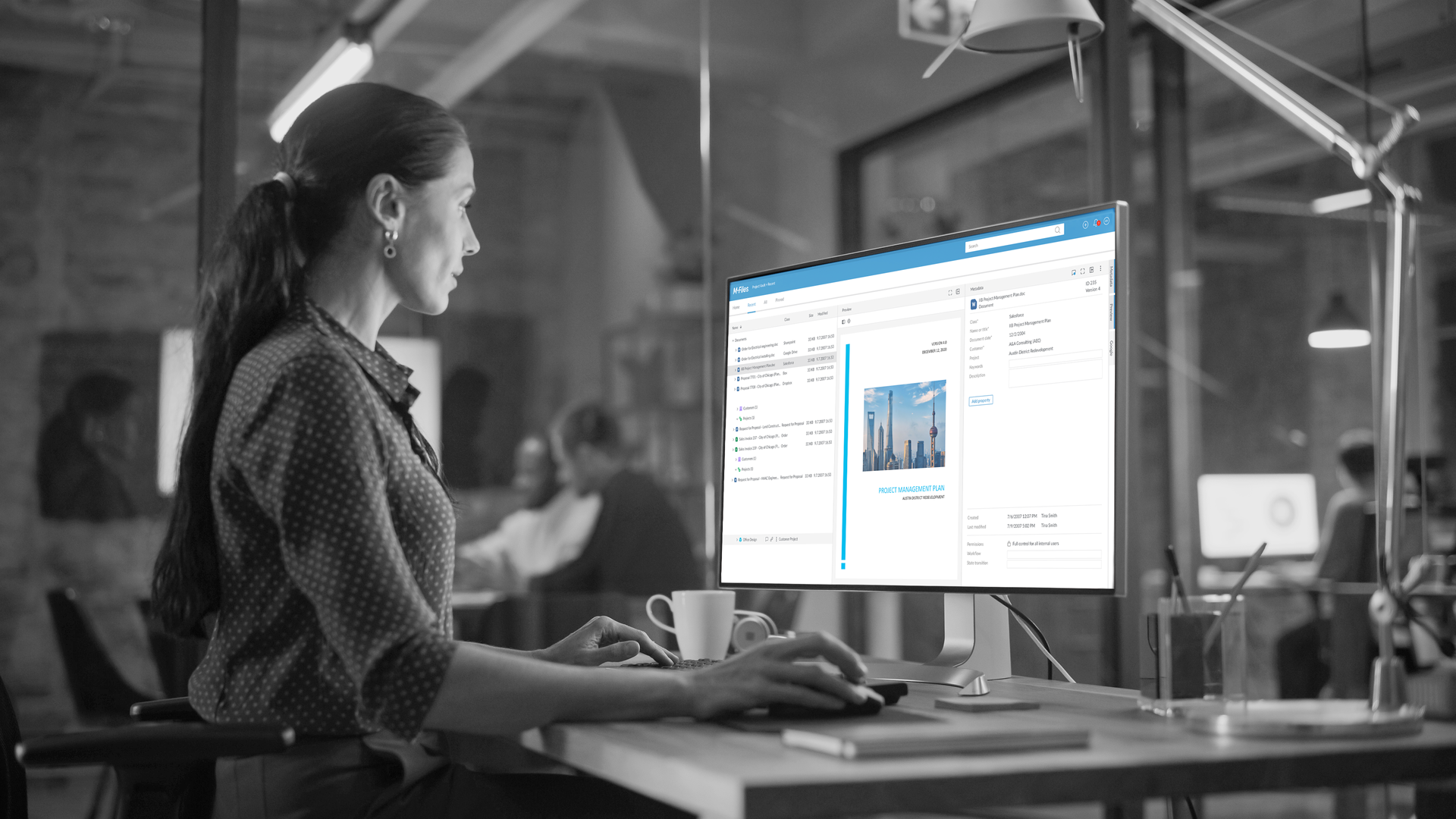5 Ways HR Can Ditch Paper & Manage Information Better
A recent survey carried out by M-Files showed that paper is still a burden for most businesses.
81 % of the people surveyed confessed to printing out at least one document a day in the office, with 55 % of organisations still using manual, paper-based processes for capturing signatures and approving documents.
With the paper still being used heavily across organisations, filing and managing this information becomes time-consuming and challenging. As a result, 58 % of all paper documents are left on desks or in filing cabinets, and as such, a third of people surveyed confessed to having read something that was confidential and not intended for them because it was printed and left unsecured in the office.
With HR departments managing highly confidential information such as employee records, salary details, and grievances, (much of which they are required to store for a certain time period) they suffer from paper-related problems perhaps more than any other part of the business.
HR teams who can leverage an enterprise information management (EIM) solution are able to operate at a vastly superior level of efficiency than those that still rely on paper and filing cabinets. M-Files’ unique approach to EIM uses metadata (or information about information) to manage documents, records, and other information by “what it is”, rather than “where” it’s stored.
For example, rather than choosing a suitable location in which to store an employee contract, you simply tag it with metadata properties, such as the employee’s name, their department, role, and start date. By tagging these metadata properties you are effectively describing “what” that document is, allowing you to find it again by searching for any one of those properties, rather than finding it in a folder.
As well as making information easy to access and manage, metadata also has the power to drive workflow, streamline HR processes and keep information secure.
While the benefits are extensive, these are the top 5 ways in which metadata-powered EIM can help HR departments reduce reliance on paper, manage information better, and work more efficiently.
1. Manage All Information Electronically
An EIM system removes the need for paper altogether. Documents and records can be stored, shared, and disposed of electronically throughout each stage of their lifecycle.
With an EIM system, there is no longer any need to print or scan documents, as documents requiring approval can be reviewed and signed digitally.
However, while an organisation may be paper free internally, it is likely that it will still receive several documents in paper form from external parties. Incoming paper documents can also be scanned, digitised, and disposed of effectively using EIM.

2. Safeguard Information
Dealing with large quantities of paper documents and records mean valuable storage space in the office is wasted. What’s more, critical information is vulnerable to fire, flooding or tampering. Will your current paper-led methods of document management meet your auditor’s requirements or ensure you meet the necessary data protection standards?
Metadata can be used to manage permissions, ensuring that people only have access to the information they are authorised to. This can be dynamic, with access to a document changing as it moves through its lifecycle, or as a person’s job role changes. This process is also automated, meaning less work is involved for HR and IT to ensure information is secure, yet available to the right people. An example of this would be an employee contract that was tagged with the employee’s name as a metadata property. By applying that piece of metadata, you can ensure that only HR, the employee, and their manager are able to view the document. If that employee were to change departments, the system would automatically update to mean that their new manager could now see the contract, and the old manager was no longer able to.
EIM also enables you to access the full version history of every piece of information. This means you can see who has accessed a document, what they have done, and when. Visibility, information security, and auditability is transformed through the use of EIM.
3. Find and Update Employee Records Instantly
How long does it take you to find what you need in a filing cabinet? Manually searching through even the most organised of filing cabinets is a hugely time-consuming task – as is finding that spot to return the document to when changes have been made.
Unfortunately, storing this information electronically in folders is not much easier. You’re just moving the problems of physical filing cabinets to digital filing cabinets. How do you know which folder someone else has stored a document in—particularly if that document is relevant to multiple different folders? An example of this is an employee contract.
You could search for this document in a folder for that specific employee, or equally a folder containing all employee contracts, or a folder containing records by department or role. Information is hard to find, and inevitably, duplicate copies are made, making it hard to ensure you’re working on the most up-to-date version.
By managing information based on “what” it is, searching for the information you need becomes quick and easy.
Because you have described the document using metadata (tagging it with properties such as “document type” and “employee name”) rather than manually searching through multiple relevant folders, you can now search for the document in the EIM system. You can choose which search terms you use, as you can search based on metadata properties or even text within a document, and the system will return a list of search results in order of relevance.
Crucially, regardless of the way you search for and access this contract, there will still only be one single copy. You can then make the necessary updates to the document without needing to print anything or save multiple copies.
This means there will only ever be a single copy of a document, so HR and employees will always be accessing the latest, most up-to-date version. You can also leverage metadata to automate record review cycles, retention, and disposition policies if required.
4. Automate Manual Processes
The HR department deals with a number of processes which need to be stringently followed but can be extremely manual and cumbersome.
An example of such a process is hiring a new employee. Advertising a vacancy, managing applications, arranging interviews, dealing with offer letters, signing contracts, and notifying managers of new starters, can all be automated and entirely digitised by leveraging EIM, through the power of metadata.
EIM can be used to publish job adverts to an intranet or website, receive and automatically store all applications and accompanying documents, and trigger a workflow which automates the process of arranging interviews, dealing with and signing offer letters and contracts, and confirming start dates from beginning to end.
By streamlining and automating as much of a process such as recruitment, employee learning and certifications, and record review cycles as possible, HR is free to concentrate on the key task of managing the most important asset in the company; its people.
5. Access Everything From One Single Place
As an HR department, it’s likely you are using one or more specialist HR systems alongside network drives, and paper in filing cabinets. But do all these information repositories communicate with each other, or are silos of (often duplicate) information formed?
An EIM system should communicate fluently with your HR, ERP, CRM, or any other system, allowing you to access anything you need from a single location. You can even access information and action tasks using your smartphone or tablet!
More Articles



Share

